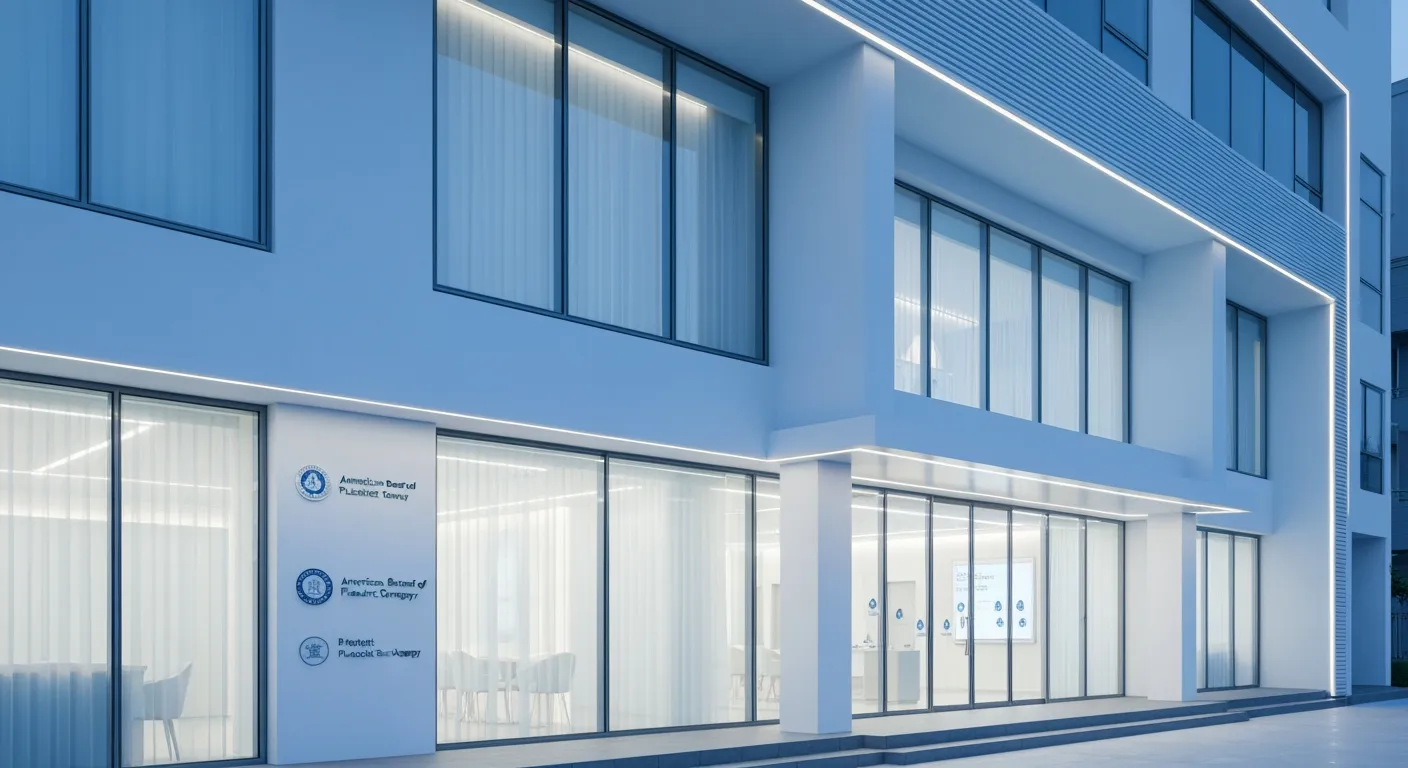
November 17, 2025
Why Accreditation and Certification Are Crucial in Plastic Surgery
Ensuring Safety and Excellence: The Imperative of Accreditation and Certification in Plastic Surgery
Oct 2, 2025

Finding the "best facial plastic surgeon near me" isn't about finding a name at the top of a search list. It’s about finding the surgeon who is the absolute best fit for you. This comes down to a blend of proven expertise, the right board certifications, and an artistic eye that matches your own vision for your results.
Let's walk through how to move past the noise of online searches and build a solid framework for making a choice you can feel confident about.
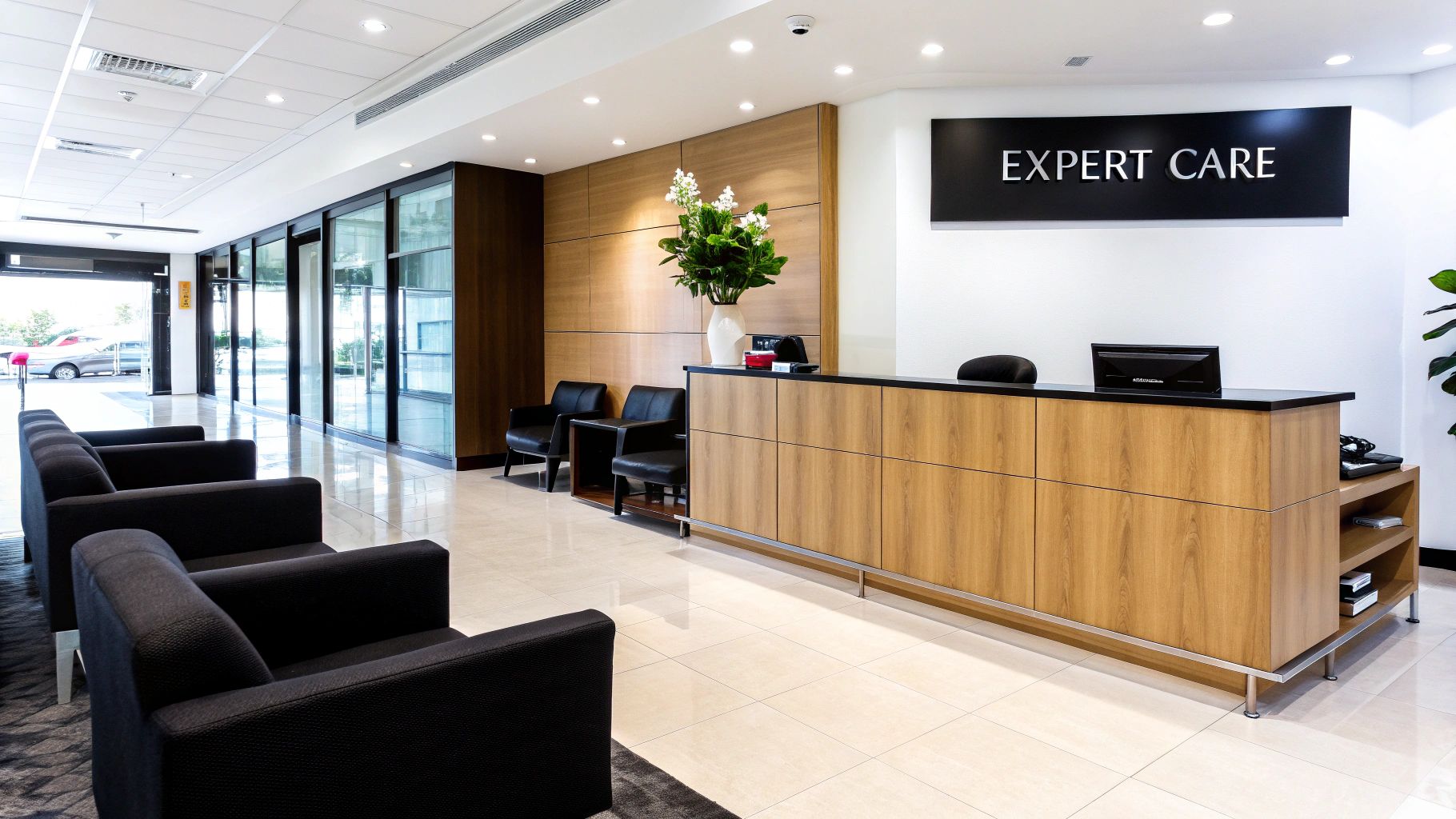
It’s easy to feel overwhelmed when you first start looking. The key is to take a structured approach, starting with some serious vetting before you even think about booking consultations. This isn't just about a quick Google search; it's about doing your due diligence to create a shortlist of highly qualified surgeons.
This initial screening is your first line of defense. You're looking for hard proof of a surgeon’s qualifications and experience. While a surgeon's own website is a good starting point, you'll want to cross-reference their claims with official medical board websites and independent patient reviews to get the full picture.
First, narrow your search to surgeons in your area who truly specialize in facial procedures. A general plastic surgeon might offer facelifts, but a dedicated facial plastic surgeon lives and breathes the complex anatomy of the face, neck, and nose. That focused experience can make a world of difference.
As you build your list, zero in on these non-negotiables:
Board Certification: Is the surgeon certified by a relevant, credible board? Look for certification from the American Board of Facial Plastic and Reconstructive Surgery (ABFPRS) or the American Board of Plastic Surgery (ABPS). This is a baseline for safety and expertise.
Procedural Focus: Dig into their website. Is their practice centered around the procedure you want, like rhinoplasty or deep plane facelifts? Or is it just one of a dozen things they do? You want a specialist.
Patient Galleries: Spend time in their before-and-after galleries. Do the results look natural and refined, or "done"? Look for patients who had similar starting points to you—whether it's your facial structure, age, or specific concern.
Facial procedures are more common than ever. Globally, surgeries on the face and head have increased by 4.3%, with over 7.4 million procedures performed. Eyelid surgery is now the single most common surgical procedure worldwide at over 2.1 million, a jump of 13.4%. This rising demand makes it even more critical to find a surgeon with truly specialized skills. You can explore more on these global surgery trends at ISAPS.org.
Before you invest time and money in consultations, a quick check on these foundational criteria will help you filter out surgeons who aren't the right fit. This simple checklist can streamline your initial research.
Using this checklist helps ensure that any surgeon who makes it to your consultation list has already met a high standard of quality and safety.
A methodical research process is your most powerful tool for a safe and successful outcome. The time you invest upfront vetting credentials and reviewing a surgeon’s work is what prevents disappointment and minimizes risks down the line.
Ultimately, this entire process is about finding a true partner in your journey—someone whose skill and judgment you can trust completely. For a deeper dive, our complete guide on how to research plastic surgeons breaks it down even further.
When you start searching for the "best facial plastic surgeons near me," you're going to see the term board-certified everywhere. But here's what many people don't realize: not all certifications are created equal. Getting this part right is the single most important step you can take for your safety and for getting the beautiful results you want.
Think of it this way: you wouldn't let a general handyman rewire your house. You’d hire a licensed, master electrician. The stakes are infinitely higher when it comes to your face.
Board certification is your proof that a surgeon has completed a specific residency program and passed a series of intense written and oral exams. It’s a baseline—a testament to their commitment, knowledge, and adherence to the highest ethical standards. Without it, you’re flying blind.
In the world of facial plastic surgery, two board certifications are considered the gold standard. Knowing what they mean will instantly help you filter out surgeons who aren't the right fit.
ABFPRS (American Board of Facial Plastic and Reconstructive Surgery): This is the mark of a true specialist. Surgeons with this certification focus exclusively on plastic surgery of the face, head, and neck. To even qualify, they must first be board-certified in either Otolaryngology (Head and Neck Surgery) or Plastic Surgery, followed by more rigorous training and exams dedicated solely to the face.
ABPS (American Board of Plastic Surgery): This board certifies surgeons in plastic surgery for the entire body. While many ABPS-certified surgeons are fantastic at facial procedures, their training is naturally broader, covering everything from breast augmentation to body contouring.
If you're considering a facelift, rhinoplasty, or eyelid lift, a surgeon certified by the ABFPRS brings a level of focused expertise that's hard to match. Their entire practice revolves around the intricate anatomy of the face.
Choosing a surgeon isn’t just about ticking a box. It's about finding an expert whose entire career is dedicated to the art and science of facial aesthetics. Someone who performs facelifts every single day will have a depth of skill and an artistic eye that a generalist simply can't replicate.
The connection between specialized certification, hands-on experience, and happy patients is crystal clear.
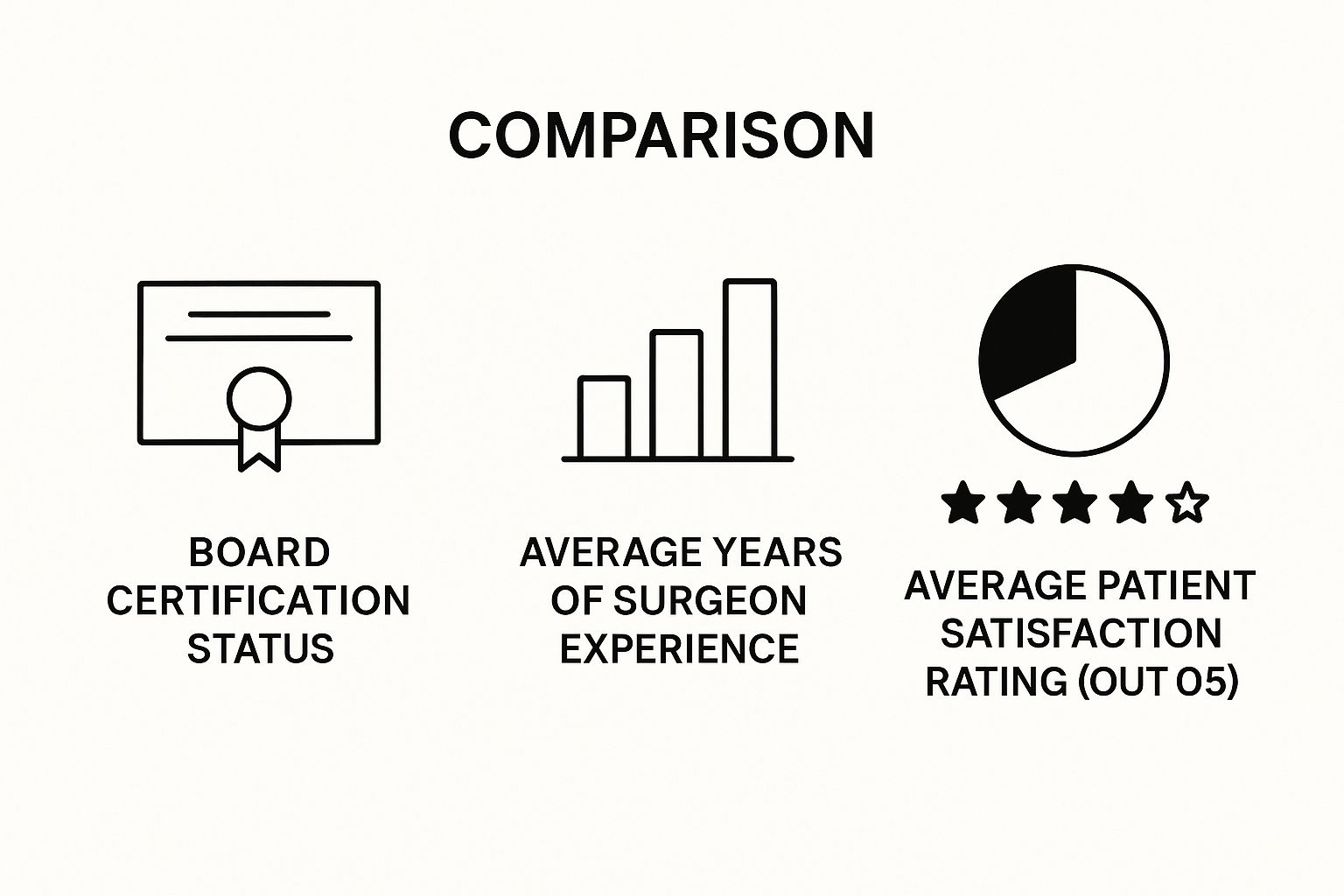
As the data shows, surgeons with these top-tier board certifications don't just have more years of experience under their belts—they also consistently achieve higher patient satisfaction ratings.
It's easy to get confused by the different titles and certifications. This quick table breaks down what each specialty really means for you as a patient seeking a facial procedure.
Ultimately, for surgical procedures on the face, you want a surgeon whose training and daily practice are laser-focused on that one area.
Beyond board certification lies another critical layer of training: the fellowship. A fellowship is an optional, extra year (or even two) of highly specialized training a surgeon completes after their residency. This is where they go from being a qualified surgeon to a true sub-specialist in an area like facial plastic surgery or oculoplastic (eyelid) surgery.
Picture this: two surgeons are both board-certified. But one of them spent an additional year training directly under a world-renowned rhinoplasty expert, performing hundreds of complex nose jobs. If you need a revision rhinoplasty, that fellowship-trained surgeon brings an entirely different level of experience to the operating room.
Don't be shy about asking direct questions during your consultation:
A surgeon who has invested in this level of training will be more than happy to talk about it. Vagueness is a red flag. Also, understand the crucial difference between "board-eligible" and "board-certified." You can learn more about why choosing a board-certified surgeon is a crucial decision on our blog, but in short: certified means they've passed the test, not just that they're allowed to take it.
This intense focus translates directly into better, more predictable outcomes. A surgeon who has performed over 1,000 facelifts has seen it all. They can navigate unique facial structures and anticipate challenges a less experienced surgeon might miss. This isn't just about technical precision; it’s about judgment and artistry honed over thousands of hours. You aren't just choosing a doctor—you're choosing their entire history of training and hands-on experience.
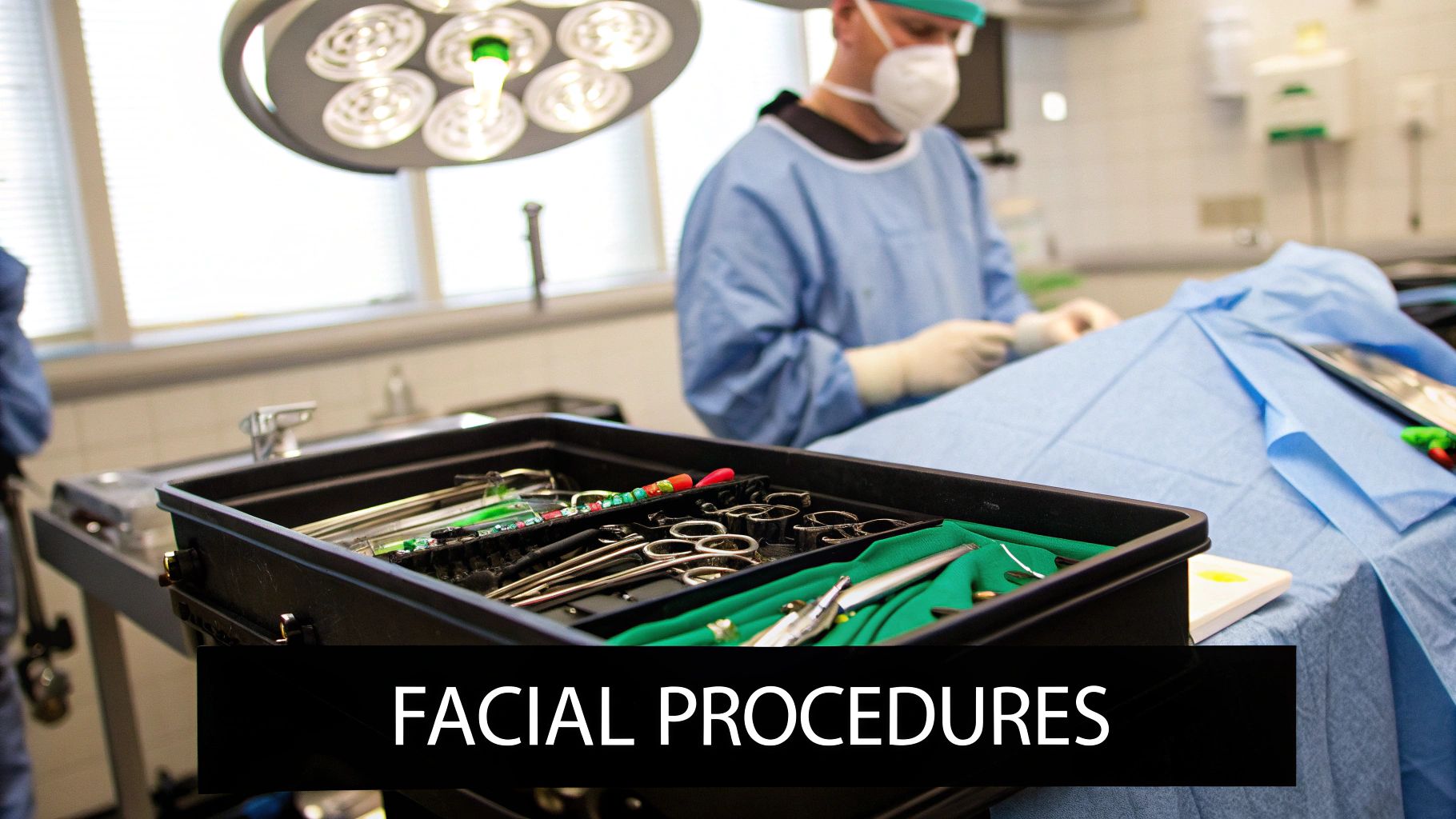
Alright, you've checked a surgeon's credentials, and they look solid. Now for the fun part—seeing their actual work. Patient reviews and before-and-after photos are where the rubber meets the road. They give you a real window into a surgeon's skill, their aesthetic eye, and what it’s actually like to be their patient.
But you have to learn how to look at them with a discerning eye. Not every glowing review or dramatic photo tells the full story. Spotting the little details is what separates a good choice from a great one.
Think of a surgeon's gallery as their portfolio. It’s a curated collection of their best work, designed to show you what they can do. Your job is to decide if their "best" matches what you want.
First, just look at the photos themselves. Are they professional? Good galleries use consistent lighting, backgrounds, and camera angles for the before and after shots. It’s a small thing, but it shows a level of care and attention to detail that you definitely want from someone operating on your face.
Then, zero in on the results. You're not just looking for a big change; you're looking for a good change. The best results look natural and balanced with the person's other features. The goal is to look like a refreshed, better version of yourself—not like you've obviously had "work done."
Here are a few pro tips for your analysis:
A dead giveaway of a truly skilled surgeon is their ability to customize. If every nose in their rhinoplasty gallery looks identical, they're probably using a cookie-cutter approach. True artistry is about tailoring the procedure to fit and enhance each person's unique face.
A great gallery won’t hide anything, either. It should show you multiple angles—front, side, and three-quarter views. This gives you the complete picture of how the surgical changes settle into the face from all sides. To get even better at this, you can learn more about exactly what to look for in before-and-after plastic surgery photos.
Photos show the outcome, but reviews tell the story of how they got there. They’re an absolute goldmine for understanding the entire patient experience, from the first phone call to the last check-up.
Don't just scan the star ratings. A five-star review that just says "Great doc!" tells you almost nothing. A detailed four-star review that walks you through the pros and a minor, resolved con is infinitely more valuable. Make sure you're checking third-party sites like RealSelf, Google, and Healthgrades to get the most unbiased feedback.
Look for patterns. Do lots of people rave about the surgeon's warm, reassuring bedside manner? Do multiple reviews mention how amazing and helpful the office staff is? On the flip side, if you see repeated complaints about long wait times, feeling rushed, or poor post-op communication, pay attention.
Keep an eye out for these specific details in the testimonials:
A word of caution: be wary of a flood of recent, generic, over-the-top reviews. They can sometimes be a sign of a marketing push. The most authentic reviews feel real—they're specific, balanced, and give you a clear, honest picture of what to expect.
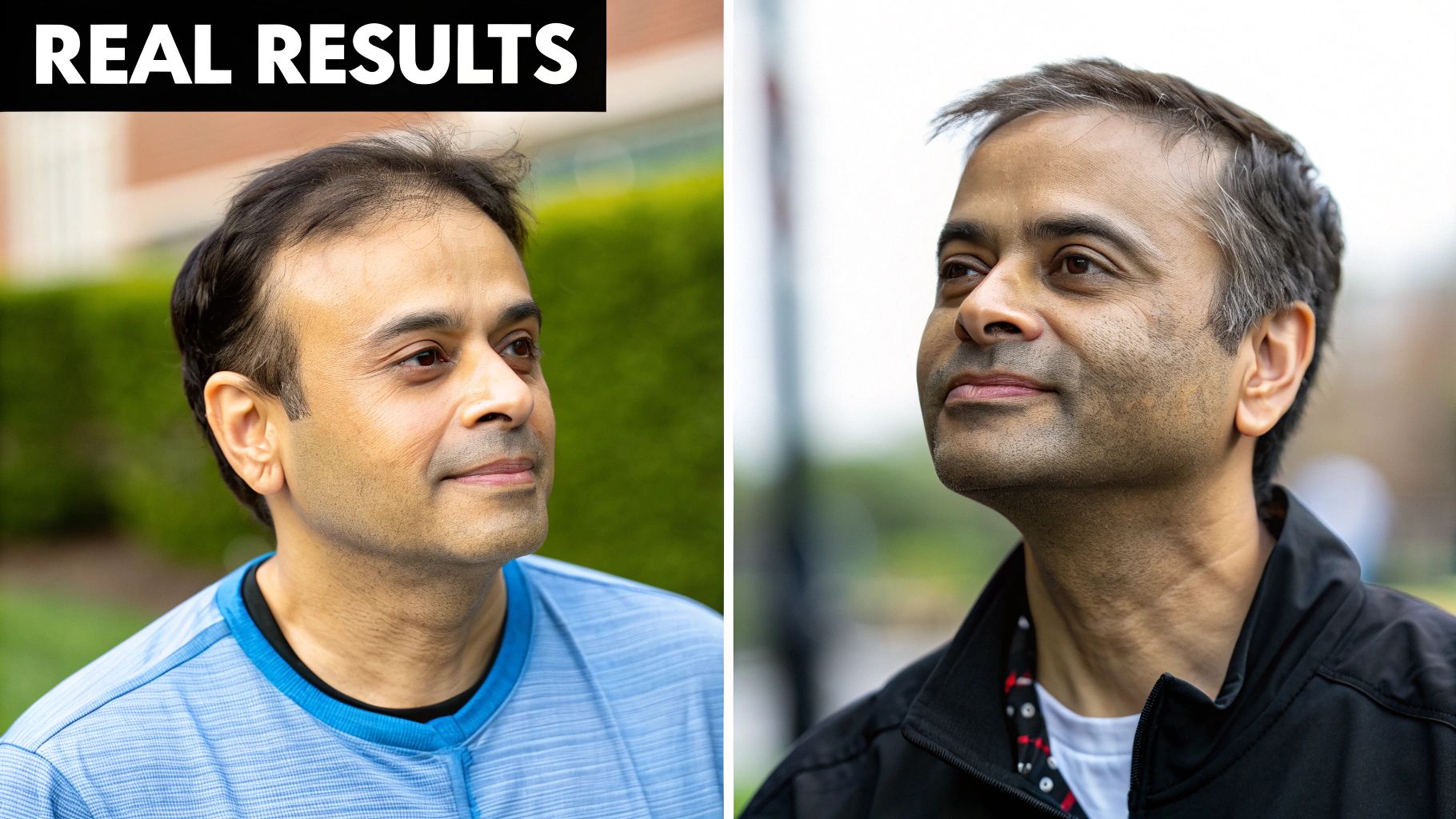
After all the online research and review-scrolling, the consultation is where everything gets real. This isn't just an appointment; it's an interview. And you're the one in the hiring seat for a very important job.
Walking in prepared completely changes the dynamic. It elevates the conversation from a simple price check to a genuine assessment of the surgeon's skill, artistic eye, and whether they’re the right person to partner with. This is your chance to confirm that their technical abilities are matched by their ability to actually listen and understand what you want.
A truly great surgeon welcomes questions. They expect them. If you get vague answers or feel rushed, that’s a massive red flag. Your goal here is to understand their specific approach to your procedure, not just hear them talk in generalities.
Think of it this way: a surgeon who has performed a thousand rhinoplasties can talk endlessly about the subtle differences in technique. They won't just tell you what they'll do; they'll explain why they'd choose one method over another for your unique facial anatomy.
Here are some essentials to have on your list:
This level of scrutiny is standard in top-tier practices. The United States accounts for 22% of the world's aesthetic procedures, with over 6.1 million performed annually. That volume is great for innovation, but it also means you have to be vigilant in making sure your surgeon meets the absolute highest safety protocols. For more context, you can explore breakdowns of global plastic surgery statistics.
Most modern practices use digital imaging to give you a preview of your potential results. It’s an exciting tool, but you need to go in with the right mindset.
Treat these simulations as a powerful communication tool, not a money-back guarantee. Their real purpose is to make sure you and the surgeon are on the same page aesthetically. A skilled surgeon uses this tech to show you what's possible while also gently managing your expectations about what's realistic for your anatomy.
A digital rendering is a starting point for a conversation about goals, not a promise of an exact outcome. A great surgeon will use it to explain the 'why' behind their plan, discussing how they will work with your unique anatomy to achieve a balanced, natural-looking result.
Be wary of any surgeon who presents a simulation as a definite promise. Surgery is complex, and your body's healing process is a major variable. The true value here is confirming you both share the same artistic vision for the final result.
Beyond the technical qualifications, you simply have to connect with your surgeon. Do they make you feel comfortable enough to ask that "silly" question you've been nervous about? Do they listen without interrupting?
This rapport is more important than you might think. You're beginning a relationship that lasts for months, from pre-op appointments through your entire recovery. Clear, comfortable communication is key.
A surgeon’s communication style often says a lot about their entire practice:
Ultimately, you need to walk out of that consultation feeling confident, informed, and respected. Trust your gut. If something feels off or you feel pressured in any way, walk away. Don't hesitate to get a second or even a third opinion—the right surgeon will make you feel empowered and completely at ease with your choice.
https://www.youtube.com/embed/oy2UWjVMmjQ
Okay, you’ve done the hard work and narrowed your list down to a few top-notch surgeons. Now the conversation shifts to the practical side of things: what’s this going to cost, and where will the surgery actually happen?
These two questions are more connected than you might think. A suspiciously low price can sometimes point to corners being cut in critical areas like safety, staffing, or the quality of the facility. It's crucial to understand exactly what that final number represents.
When a surgeon's office gives you a quote, it shouldn't just be a single figure. A good, transparent practice will provide an itemized breakdown of every fee. Don't just skim this part—digging into these details is how you make a smart decision and avoid surprise bills down the road.
A proper quote for facial plastic surgery is typically broken down into three main parts. Understanding each one helps you compare different surgeons fairly and see where your money is going.
Your quote should clearly outline:
Seeing this level of detail is a great sign. It shows professionalism and a commitment to transparency. If you get a quote that’s just a single lump sum with no explanation, you should absolutely ask for a more thorough breakdown.
A lowball quote might look tempting, but it can come with a hidden price. When it comes to your health and safety, this isn't the time to bargain hunt. The best surgeons prioritize patient well-being, and their pricing reflects that commitment to quality.
Of all the factors to consider, where your surgery takes place is arguably the most important for your safety. A reputable surgeon will only operate in a fully accredited surgical facility.
Think of accreditation as a seal of approval. It’s official proof that the center meets strict national standards for patient safety, cleanliness, and emergency readiness. It’s your guarantee of quality.
You’ll want to see a certification from one of these major organizations:
Accreditation means the facility is held to the same high standards as a hospital operating room. They have advanced life support systems and a team trained to handle any complication that could arise. A surgeon operating in a non-accredited space is a huge red flag—a risk you should never be willing to take.
With the cosmetic surgery market projected to grow from USD 146.19 billion to USD 566.22 billion by 2034, maintaining these high standards is more important than ever. You can read more about the cosmetic surgery and procedure market trends to understand why this matters.
Choosing a surgeon who uses an accredited center gives you incredible peace of mind. You know the environment is sterile, the equipment is up-to-date, and a skilled team is ready to make your well-being their number one priority.
After all the research, it's totally normal to still have a few nagging questions. This is the part where we clear up any lingering doubts so you can feel completely confident in your decision. Let’s walk through some of the most common concerns I hear from patients.
It makes perfect sense to start your search close to home. But sometimes, the absolute best surgeon for you isn't right around the corner. For very specialized procedures—think a deep plane facelift or a tricky revision rhinoplasty—expanding your search is not only common, it's often the smartest move you can make.
Think of it this way: your results are for life. A few hours in the car is a small trade-off for the peace of mind that comes from choosing a surgeon who has dedicated their career to mastering the one procedure you want.
Ultimately, you should prioritize the surgeon's credentials, their specific experience, and your comfort level with them over the convenience of a short drive. You'll just need to factor in the logistics for follow-up appointments. For many people, making that extra travel time is the best investment they make in their safety and their final outcome.
When you’re in a consultation, your intuition is your best guide. If something feels off, it probably is. There are a few undeniable red flags that should tell you to slow down and seek a second opinion.
First and foremost, be wary of any high-pressure sales tactics. A truly professional medical practice will never push you with "limited-time" offers or urge you to book surgery on the spot. This is a major decision that needs to be made thoughtfully and on your own terms.
Here are a few other major warning signs:
Trust your gut. The relationship with your surgeon is built on trust and mutual respect. If you leave a consultation feeling unheard, uneasy, or pressured, that is your signal to continue your search.
Social media can be a fantastic place to start. It gives you a window into a surgeon's aesthetic, lets you see a wide range of patient results, and helps you get a feel for the practice's personality. That said, it should never be the only tool you use to make your choice.
Remember, these platforms are highly curated marketing channels. They're designed to show the best angles, perfect lighting, and most stunning outcomes. A popular Instagram feed is no substitute for rigorous, specialized training and a proven track record of safety.
Use social media to gather ideas and see a surgeon's work, but always cross-reference their credentials with official medical boards. Your in-person consultation and reviews on independent sites like RealSelf will always give you a much more complete and accurate picture.
This is so important. Getting this right is the key to being thrilled with your results. Finding a surgeon whose artistic vision aligns with yours is how you end up with a look that feels authentic and natural. The best way to figure this out is to dive deep into their before-and-after gallery.
As you browse their portfolio, ask yourself these questions:
When you meet for your consultation, bring photos of results you admire—even if they’re from another surgeon. This gives you and the doctor a shared visual language. A skilled surgeon will use these examples to understand your goals, then explain how they can adapt their techniques to your unique anatomy for a balanced, harmonious result, rather than just trying to copy a picture.
At Cape Cod Plastic Surgery, we believe a well-informed patient is an empowered patient. Led by Dr. Marc Fater, a board-certified plastic surgeon with over 30 years of experience, our team is dedicated to providing personalized care in our on-site, AAAASF-accredited surgical suite. If you are ready to take the next step with a team you can trust, we invite you to schedule your consultation.

November 17, 2025
Ensuring Safety and Excellence: The Imperative of Accreditation and Certification in Plastic Surgery

November 16, 2025
Discover how to finance cosmetic surgery with our guide. Explore personal loans, medical credit cards, and payment plans to make your goals a reality.
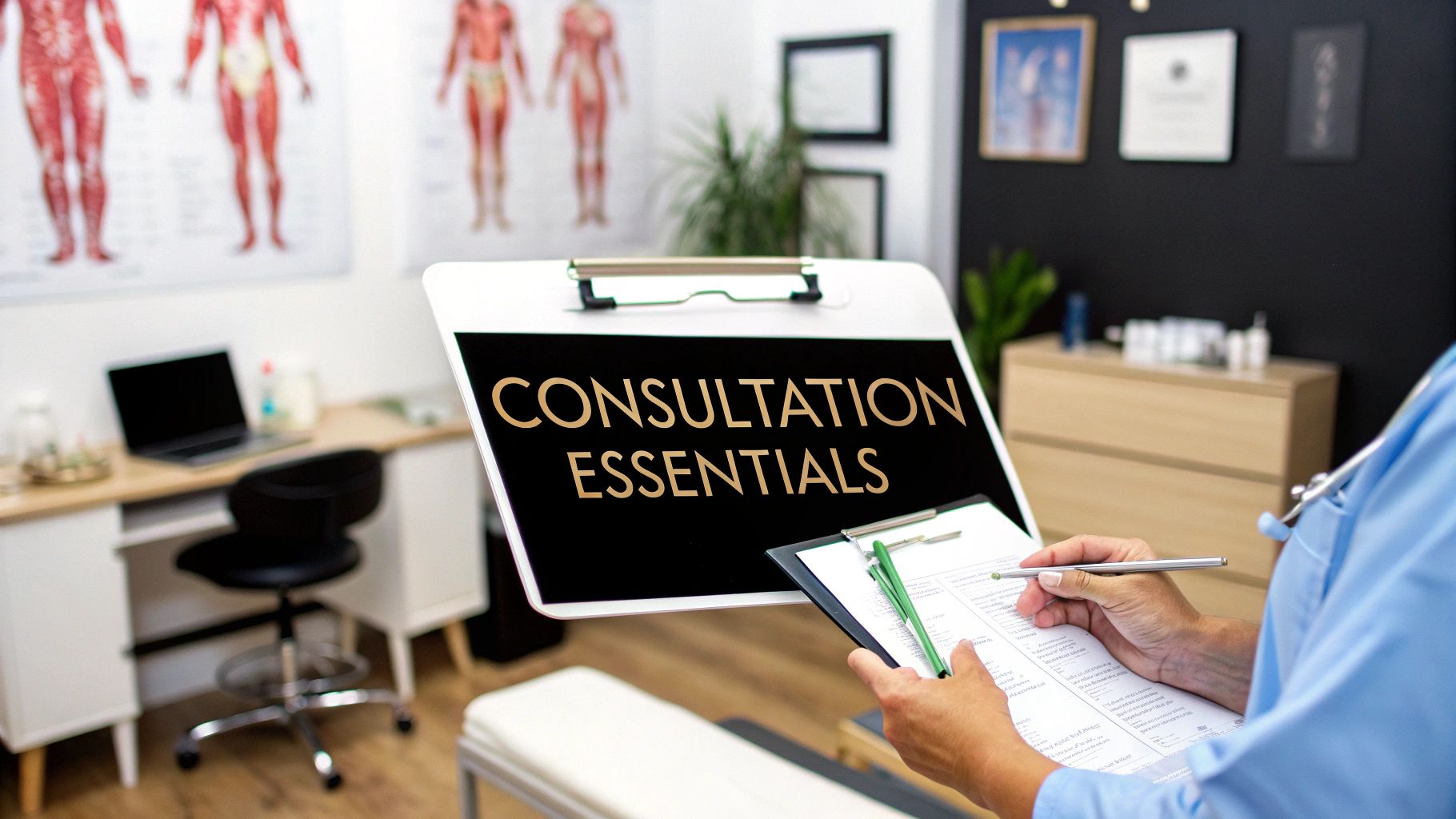
November 15, 2025
Learn the questions to ask cosmetic surgeon before your procedure to ensure safety, align expectations, and achieve the best results.